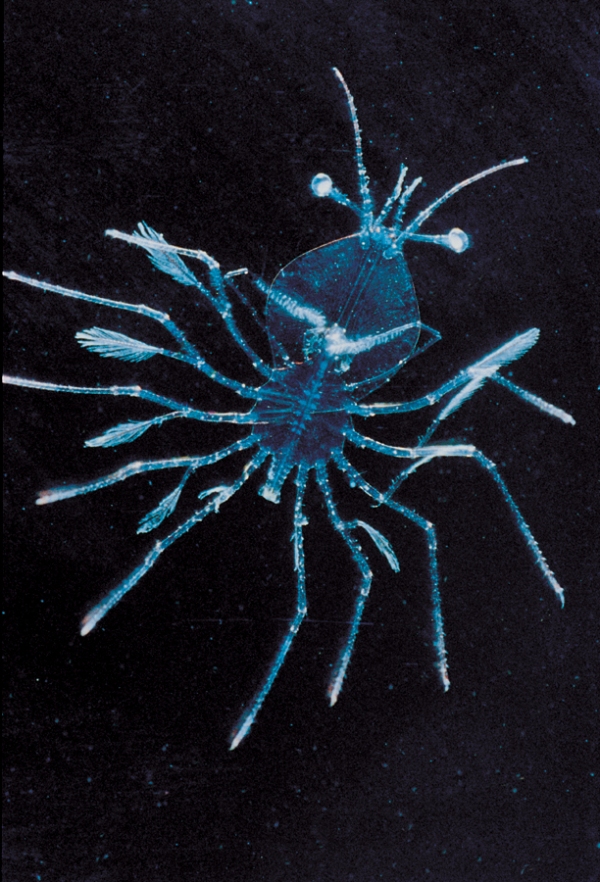This week we are featuring something a little different. No, it’s not a member of a specific species – instead, it’s a phyllosoma.
These strange-looking critters are the planktonic larval stage of coral, slipper and spiny lobsters – together, they make up the infraorder Achelata, so named because they lack the claws so common to other decapods (shrimp, lobsters, and so forth).
As you can see from the image, phyllosoma larvae have a very thin, flat, transparent body, with very long legs – perfectly adapted for floating in the water column. This stage can last for several years, and some phyllosoma can get almost as big as the palm of your hand! The next stage is the puerulus stage, in which the larva becomes a strong swimmer and finds a good spot along our rocky shores to settle and moult into a juvenile stage, which looks very much like the adult stages we know all about.
The mystery of phyllosoma larva
Scientists still don’t know very much about phyllosoma larva, including what they eat – some of this is because, due to the length of time this stage can last, it’s difficult to keep them in labs. Also, scientists don’t yet have the sort of detailed descriptions of how each species of phyllosoma is different from the others which would allow them to be identified in plankton samples (although the phyllosoma themselves are quite easy to see).
Scientists have begun using molecular techniques to help them distinguish between the different species. These new techniques are beginning to help us understand these species’ ecology and distribution.

